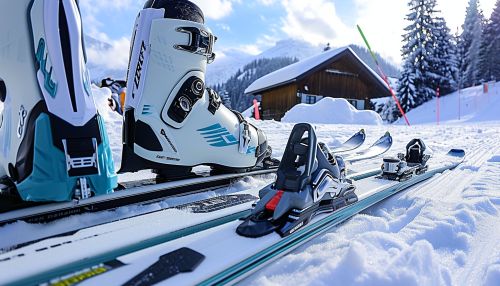Nordic skiing
Introduction
Nordic skiing, also known as cross-country skiing, is a winter sport that encompasses various techniques and events. The sport's roots can be traced back to ancient times, with evidence of its practice in prehistoric Scandinavia. Today, it is a popular recreational activity and a competitive sport, with events held at the Winter Olympic Games and the FIS Nordic World Ski Championships.
History
The origins of Nordic skiing can be traced back to Scandinavia, where people used skis as a means of transportation during the winter months. The oldest known ski artifacts, discovered in Russia, date back to 6000 BCE. However, the first written records of skiing are from the 13th century, found in the Norse sagas. These sagas describe the use of skis by the Norse people in their daily life and in warfare.
Equipment
Nordic skiing requires specific equipment, including skis, boots, bindings, and poles. The skis used in Nordic skiing are longer, narrower, and lighter than those used in alpine skiing. They are designed for speed and maneuverability on flat and uphill terrain. The boots are designed to provide ankle support and are attached to the skis via bindings. The poles, which are used for propulsion and balance, are typically made of lightweight materials such as carbon fiber.


Techniques
There are two main techniques in Nordic skiing: classic and skate skiing. Classic skiing, also known as diagonal stride, involves a straight-ahead motion, with the skis moving parallel to each other. Skate skiing, on the other hand, involves a side-to-side motion, similar to ice skating. Each technique requires different types of equipment and is used in different types of events.
Events
Nordic skiing encompasses several events, including cross-country skiing, ski jumping, and Nordic combined. Cross-country skiing involves races over varying distances, from sprints to marathons. Ski jumping involves jumping from a specially designed ramp and aiming for the longest distance. Nordic combined is a combination of cross-country skiing and ski jumping, with athletes competing in both disciplines in a single event.
Training and Preparation
Training for Nordic skiing involves a combination of endurance, strength, and technique training. Endurance training, which includes long-distance running and cycling, is crucial for building the stamina required for long-distance races. Strength training, particularly for the upper body, is essential for propelling the skis and maintaining balance. Technique training involves practicing the specific movements and strategies used in Nordic skiing.
Health Benefits
Nordic skiing is a full-body workout that offers numerous health benefits. It improves cardiovascular fitness, strengthens the muscles, and enhances balance and coordination. Additionally, it is a low-impact sport, making it suitable for people of all ages and fitness levels.
Nordic Skiing Today
Today, Nordic skiing is a popular sport and recreational activity worldwide. It is practiced in countries with suitable winter conditions, including Scandinavia, Canada, the United States, and Russia. The sport is governed by the International Ski Federation (FIS), which organizes international competitions, including the World Cup and the World Championships.
